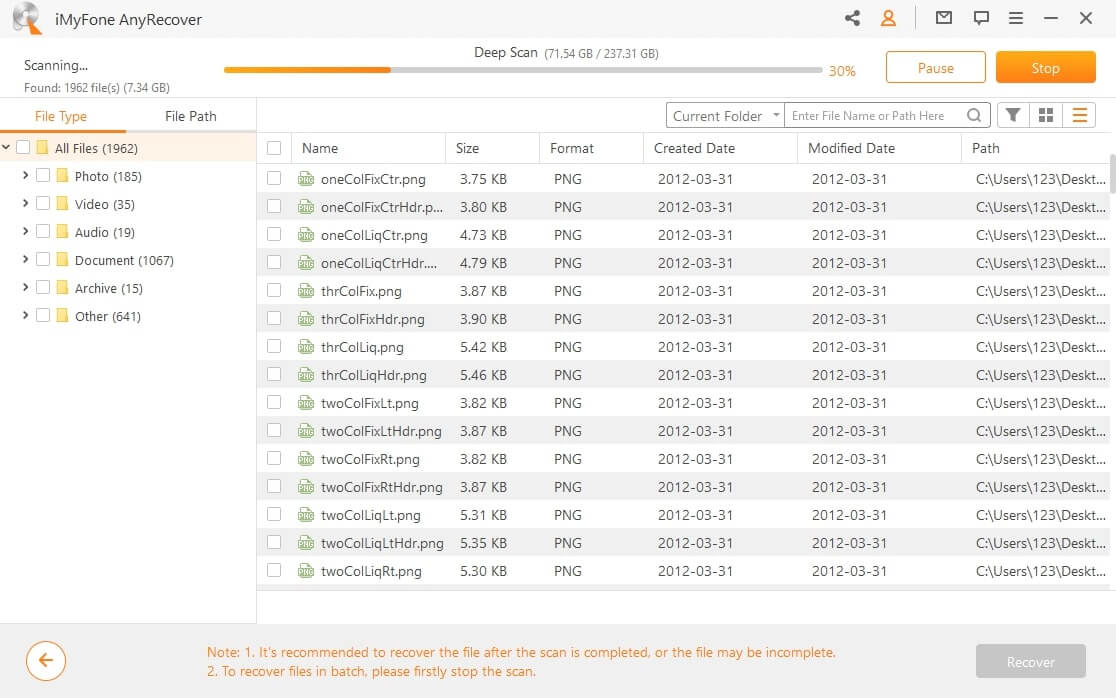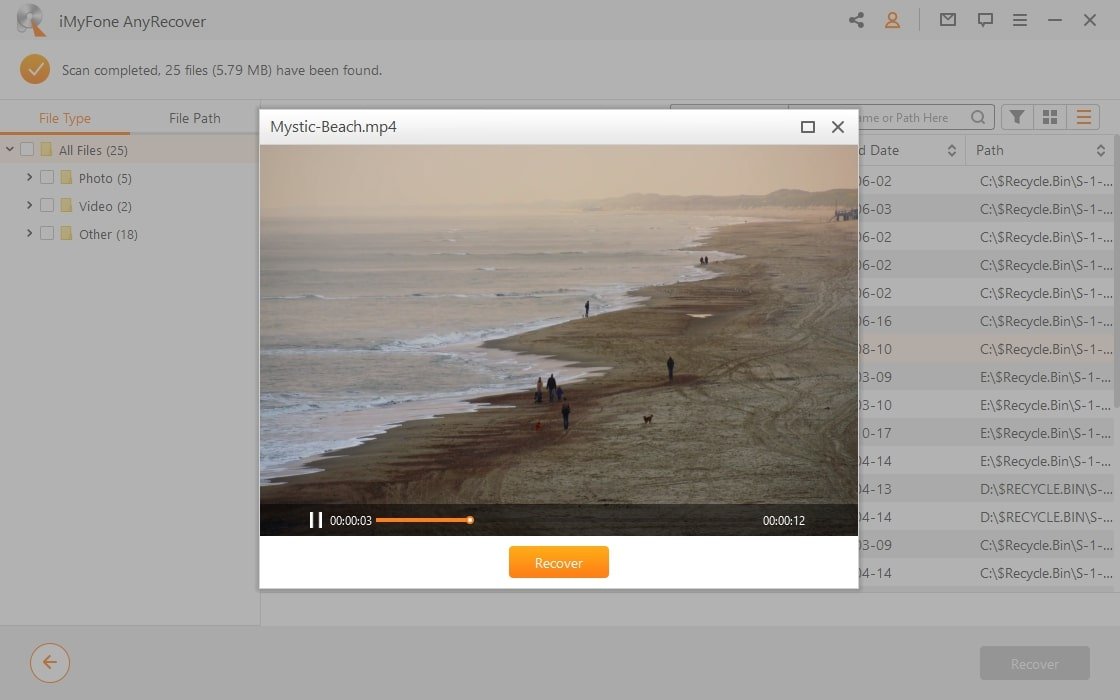Did you connect an external hard drive to your computer and it is not showing up as expected? While this may not be a common occurrence, it can sometimes happen because of certain partition issues. For instance, your external hard drive’s partition may be damaged or some of the files on the drive may be corrupted causing it to crash unexpectedly.
Whatever the reason, this is happening. You probably need to fix the problem as quickly as possible, especially if there are important files on the drive that you need to access. In this article, we are going to share with you some of the ways you can try to fix an external hard drive that is not showing up in Windows and Mac. And also, we will offer you an effective approach to recovering data from the external hard drive.
Before we get to the solutions, we recommend you try to change the USB cable that you are using to connect the drive to the computer or change the USB port. If possible, you can also try to connect the hard drive to another computer.
Part 1. How to Fix External Hard Drive Not Showing Up on Windows
Windows computers not recognizing external hard drive issues can be caused by partition issues like the ones we’ve described above, or dead or malfunctioning USB ports. It can also occur when the Windows drivers you are using are not up to date. Whatever the cause, the following steps will show you how to fix it:
Laasaga 1 : It is possible that you are plugging in the external hard drive into a USB port that is not working. So, the first thing you should do is disconnect the external hard drive and use another port. If this doesn’t work, move on to the next step.
Laasaga 2 : Look for the external drive in Disk Management. To do that: hit “Windows + R” on your keyboard to open the “Run” dialogue box. Type in “diskmgmt.msc” and then click “OK” or hit enter. The Disk Management window will open and you should be able to see the external hard drive here since there are no partitions. If you don’t see it, try the next step.
![[Fix] External Hard Drive Not Showing Up or Recognized](https://www.mobepas.com/images/20210721_60f7942f212ef.jpg)
Laasaga 3 : It is time to check the Windows drivers. To do that, open the run dialogue box again and type in “devmgmt.msc”, then click “OK”. In the window that opens, expand “Disk Drives” and look for the drive with a yellow exclamation mark on it. You can do one of the following to fix the drive:
- Click on “Update Driver” to install updated drivers.
- Uninstall the problematic driver and then restart your computer. After the restart, Windows will reinstall and configure the driver automatically.
Connect the driver again and if you still don’t see it, try the next step.
Laasaga 4 : You might also be able to fix this problem by creating a new partition. To do that: open “Disk Management” again as we did in step 2 above and then right-click on the unallocated space and choose “New Simple Volume” and then follow the instructions to create the new partition.
![[Fix] External Hard Drive Not Showing Up or Recognized](https://www.mobepas.com/images/20210721_60f79437028d9.png)
You may also be able to fix this problem by formatting the partition. To do that, right-click on the partition and then select “Format”. Choose the “file system” to complete the process. However, it is important to note that formatting a drive usually erases all the data on the drive. You may therefore need to copy all the data on the drive to another location before doing this.
Part 2. How to Fix External Hard Drive Not Showing Up on Mac
Just as it is in Windows, your external hard drive should be automatically detected as soon as you connect it to the Mac. If this doesn’t happen, here’s what you can do:
Laasaga 1 : Begin by looking for the drive in the Finder window. Just click on “File” and then select “New Finder Window” to see if the drive is below the remote disk.
Laasaga 2 : If you don’t see it, consider ensuring that the USB connection is correct and then the external drive is plugged into a working port. At this point, it may be a good idea to connect the device to a new port.
Laasaga 3 : It is also possible that the drive is connected but not mounted. In this case, you may want to mount the drive. To do that, open “Disk Utility” and if you see the drive, click on the mounting button below it and then open a Finder window to make sure it is mounted.
Laasaga 4 : If you are still unable to see it, then it is likely that the drive is not getting enough power. A single USB port can deliver only 5V. In this case, consider using a USB cable that has one connection for the drive and two for the Mac to get the power the drive needs to be operational.
Part 3. How to Recover Deleted Files from External Hard Drive
When attempting to get the external drive recognized by the computer using the processes above, it is very easy to lose some of the data on the drive. If this happens to you, don’t worry, here we have the best tool to help you recover lost data on any external drive. This professional tool with a very high recovery rate is MobePas Fa'afouga Fa'amatalaga . It has numerous features that make it the best tool to use for this purpose and they include the following:
- It can help to recover various types of data including photos, videos, music, documents, and much more.
- It supports to recovery of deleted files from Windows/Mac no matter how the data was lost, such as accidental deletion, formatting, system crash, virus attack, damaged drive, lost partition, etc.
- E lagolagoina le toe faʻaleleia o le 1000 ituaiga eseese o faʻamaumauga e aofia ai ata, pepa, vitio, leo ma sili atu.
- It utilizes the most advanced technology to increase the chances of recovery and help you get your files back easily.
- It is also very easy to use, allowing you to recover the missing data in just a few simple steps. No tech skills are required.
Taumafai e Sa'oloto Taumafai e Sa'oloto
To recover the deleted/lost data from the external drive, follow these simple steps:
Laasaga 1 : Download and install the data recovery program on your computer and launch the program from your desktop to begin the process.

Laasaga 2 : Now connect the external drive to the computer. This program supports all kinds of external drives like USB Flash Drives, Memory Cards, SD Cards, and even Camcorders.
Laasaga 3 : Select the connected drive you would like to recover data from and click “Scan” to allow the software to scan the drive for the missing data.

Laasaga 4 : A maeʻa le faʻataʻitaʻiga, o le a mafai ona e vaʻai i faila leiloloa i le isi faamalama. E mafai ona e kiliki i luga o se faila e vaʻai i ai. Filifili faila e te manaʻo e toe faʻaleleia mai le taʻavale fafo ma kiliki le "Toe Laveai" e teu ai i lau komepiuta.

If the above process fails for one reason or another, you can try to use the “All-Round Recovery” mode which will perform a deeper scan to help you find and recover the missing files.
Taumafai e Sa'oloto Taumafai e Sa'oloto
